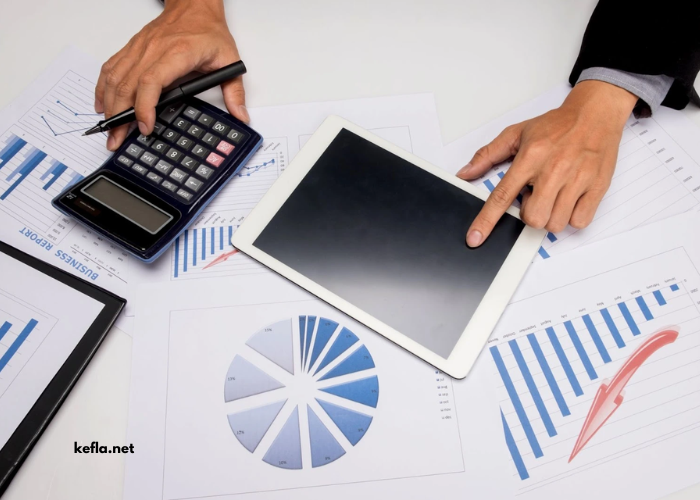Managing personal finances effectively is crucial for achieving financial stability and success. With numerous budgeting and saving strategies available today, choosing the right tools can make a significant difference in how you manage your money. Whether you’re looking to track your spending, save for the future, or invest wisely, the best financial tools can help simplify these processes. In this article, we will explore some of the top financial tools designed to help you budget effectively, save efficiently, and make more informed financial decisions.
The Importance of Personal Budgeting and Saving
Before diving into the tools, let’s first highlight why personal budgeting and saving are essential. A budget serves as a plan for your finances, helping you understand where your money is going and ensuring you live within your means. Effective saving ensures that you have funds set aside for future needs, emergencies, and long-term goals such as retirement or homeownership. Having the right tools for budgeting and saving allows you to track your progress, stay disciplined, and make more informed financial choices.
Top Financial Tools for Personal Budgeting
When it comes to budgeting, there are several financial tools that can help you stay organized, track your expenses, and stick to your goals. Here are some of the best options available today.
1. Mint: The All-In-One Budgeting Tool
Mint is one of the most popular budgeting tools available, and for good reason. Mint automatically syncs with your bank accounts, credit cards, loans, and other financial accounts to give you an accurate picture of your financial situation. It categorizes your transactions, helps you set up a budget, and even sends reminders when bills are due.
Key Features:
- Free to use
- Tracks expenses and categorizes them
- Provides detailed financial insights
- Bill tracking and reminders
- Creates personalized budgets based on spending patterns
- Credit score monitoring
Mint is perfect for those who want an easy-to-use, all-in-one solution to managing their money. The app’s simple interface and powerful features make it an ideal choice for beginners and experienced budgeters alike.
2. You Need A Budget (YNAB): Master Your Spending
YNAB is another powerful tool designed to help users take control of their finances. Unlike traditional budgeting tools, YNAB follows a proactive approach to budgeting by helping you give every dollar a job and prioritize your spending. YNAB is great for those who want to build better financial habits and ensure that they are intentionally allocating funds to savings, debt repayment, and future goals.
Key Features:
- Real-time expense tracking
- Goal setting for saving and debt repayment
- Reports on spending habits
- Educational resources for improving financial literacy
- Syncs across devices for easy access
YNAB focuses on teaching users how to budget effectively rather than just tracking expenses. With its unique “give every dollar a job” methodology, it’s a great tool for those who are serious about improving their financial discipline.
3. PocketGuard: Simplifying Budgeting
If you’re looking for a simpler, more straightforward budgeting tool, PocketGuard is an excellent option. PocketGuard automatically links to your bank accounts, credit cards, and loans to give you a snapshot of your finances. The tool shows you how much disposable income you have after accounting for bills, goals, and other expenses.
Key Features:
- Tracks income, expenses, and savings
- Provides a clear overview of your available spending money
- Customizable spending limits
- Automatically categorizes expenses
- Alerts for bill due dates
PocketGuard is an excellent option for those who want to focus on spending less than they earn and saving the difference. It’s ideal for users who want to avoid overspending and stay on top of their financial goals without getting bogged down by too many details.
4. EveryDollar: Budgeting Made Simple
EveryDollar, created by personal finance expert Dave Ramsey, is a simple budgeting app that focuses on zero-based budgeting. With EveryDollar, users can create a customized budget by allocating every dollar to a specific category. The app encourages users to be intentional with their spending and prioritize savings and debt repayment.
Key Features:
- Zero-based budgeting system
- Customizable categories
- Syncs with bank accounts for real-time tracking (with premium version)
- Simple and user-friendly interface
EveryDollar is a great option for those who want to stick to a simple, effective budgeting method. The app encourages users to allocate funds for specific goals, which makes it ideal for individuals looking to pay down debt or save for a major purchase.
5. GoodBudget: Envelope Budgeting System
GoodBudget is based on the envelope budgeting system, which involves assigning a certain amount of money to specific categories or “envelopes” for spending. GoodBudget allows you to create digital envelopes for things like groceries, entertainment, and savings, and track your spending in real time.
Key Features:
- Envelope budgeting system
- Tracks spending across multiple envelopes
- Syncs across devices for shared household budgets
- Customizable categories
GoodBudget is ideal for those who prefer the envelope budgeting system but want a modern, digital tool to track their finances. It’s simple to use and helps users stay mindful of their spending.
The Best Financial Tools for Saving
Once you have a solid budgeting plan in place, the next step is saving for your goals. Whether you want to build an emergency fund, save for a vacation, or invest for the future, the right savings tools can make all the difference. Here are some of the top financial tools designed to help you save more efficiently.
1. Digit: Automated Savings Made Easy
Digit is a unique tool that helps you save money automatically without thinking about it. The app links to your bank account and analyzes your spending habits to determine small amounts of money it can transfer to your Digit savings account. It then moves that money to savings throughout the day, helping you build your savings effortlessly.
Key Features:
- Automatic savings based on spending patterns
- No fees or minimum balance requirements
- Goal setting for different savings objectives
- Earns interest on savings
- Works with a variety of financial accounts
Digit is great for users who struggle with saving or want to save without having to think about it. It makes the process effortless and is an excellent tool for building an emergency fund or saving for specific goals like a down payment or vacation.
2. Acorns: Micro-Investing for Savers
Acorns is a micro-investing app that rounds up your purchases to the nearest dollar and invests the difference in a diversified portfolio. This makes it easy to invest spare change without any extra effort. Acorns is perfect for beginners who want to start investing but don’t have a lot of money to commit upfront.
Key Features:
- Automatic round-ups on purchases
- Diversified investment portfolios based on risk tolerance
- Educational resources on investing
- Cash-back rewards through partner brands
Acorns is an excellent tool for those who want to start investing without feeling overwhelmed by the complexities of the stock market. By automatically investing small amounts of money, it allows users to grow their savings over time.
3. Simple: Savings Goals with a Visual Twist
Simple is a mobile banking app that helps you save by creating individual savings goals. The app allows you to set up different goals (e.g., vacation, car repair, or emergency fund) and visually track your progress. With features like automatic savings and safe-to-spend balances, Simple makes it easy to stay on track with your savings.
Key Features:
- Goal-oriented savings features
- Automatic savings transfers
- Safe-to-spend balance feature to help you manage day-to-day spending
- Easy-to-use interface with visual progress tracking
Simple is ideal for people who need a visual representation of their savings goals. The app’s design encourages users to save in a structured way and makes it easy to track progress.
4. Qapital: Savings with Goals and Automation
Qapital is another excellent tool for setting and achieving savings goals. The app provides the option to set up individual goals (like saving for a vacation, car, or down payment) and automate savings through daily, weekly, or one-time contributions. Additionally, Qapital offers a feature called “spendings” that rounds up your purchases to the nearest dollar and adds the difference to your savings.
Key Features:
- Customizable savings goals
- Automatic savings options
- “Round-ups” feature for automatic savings
- Flexible withdrawal options
Qapital is perfect for people who need help saving for specific goals and want to automate the process. The app’s friendly interface and flexibility make it a great option for anyone looking to save money without a lot of effort.
5. Chime: No-Fee Savings and Spending
Chime is an online-only bank that offers a free savings account with no maintenance fees, which helps you save money without worrying about unnecessary charges. The app also automatically transfers a percentage of your paycheck into savings, helping you build your savings over time.
Key Features:
- No fees or minimum balance requirements
- Automatic savings from direct deposits
- Instant alerts for spending and deposits
- Early direct deposit feature for faster access to funds
Chime is ideal for users who want a straightforward, no-fee solution for saving money. The automatic savings feature is particularly helpful for those who want to build savings without needing to think about it.
Conclusion
With the right financial tools, personal budgeting and saving don’t have to be daunting tasks. The tools we’ve discussed in this article can help you manage your spending, track your savings goals, and take control of your financial future. Whether you choose a tool that automates your savings, helps you stick to a budget, or assists you in making smarter investment decisions, each of these platforms offers unique features that cater to different financial needs.
By using these tools effectively, you can build better financial habits, save more money, and ultimately achieve your long-term financial goals. Keep in mind that the best tool for you will depend on your personal financial situation, preferences, and goals.





